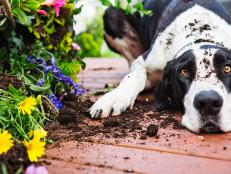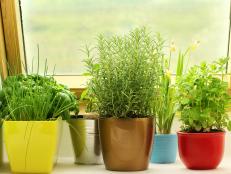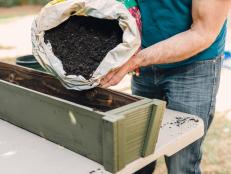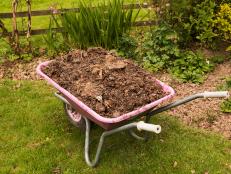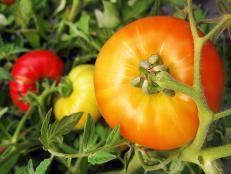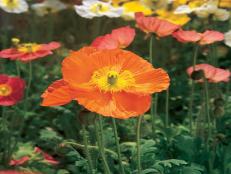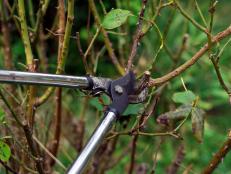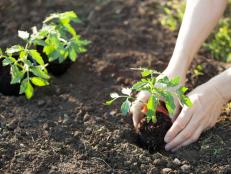Slow Gardening

It's a no-brainer, comparing modern gardens to how we eat. In just a couple or three generations we've gone from eating mostly home-cooked food, and gardening with mostly local resources, to routine fast-food and "mow-and-blow" landscapes filled with plants from afar.
Waistlines have been supersized while garden sizes have withered. Why bother to grow when you can just run to the store and get prepackaged? Instead of sowing saved seed, we buy uniform hybrids by the six-pack, shipped to us at a huge cost. Sure, we've shed a lot of the menial work of putting both food on the table and flowers in the garden, but at what cost to the connections with the Earth that our ancestors took for granted?
Slow Gardening to the rescue! Similar to Slow Food, an international movement started in Italy in the 1980s by convivial connoisseurs who savor producing, preparing and consuming traditional in-season dishes, a "slow-gardening" approach can help us enjoy our gardens year in and year out and possibly connect us with our neighbors.
Get Together
Gardeners have always been a sharing tribe. Move into a new community that has gardeners, and it won't be long before someone chats you up (even in a grocery store line) about weather or the season, which can quickly lead with a smile to something about gardening. Before you know it, your garden could have plants shared by seed, rooted cutting or division, plus solid advice, all locally-grown and region-specific.
You'd expect plant societies and other garden-related clubs to hold sway over local gardening events, but some years ago I toured several gardens with a loosely-affiliated group who call themselves the Mad Gardeners of Connecticut. Those "garden variety" gardeners had a blast as they shared plants, food, tips and lore--without having to blend in with a hard-core organization.
Nowadays, Master Gardeners--university-trained garden enthusiasts turned community activists--have supplanted traditional organized groups with regular garden tours, educational events, and plant swaps and sales.
Take It Easy
How to be a Slow Gardener? Think "long haul" and take your time. Life has lots of pressures--why include them in the garden?
Though most of us suffer inhospitable weather at least part of the year, we still love puttering around the yard and garden, especially if it doesn't involve actual work. So naturally, anything that connects us to our gardens without causing a lot of sweaty exertion is always welcome--especially if it is simple enough for the gardener to be the only moving part! Simple tools and simple motions, for simple pleasures.
It's not that we don't love our power equipment--mowers and trimmers are huge time-savers that save sweat. But leaf blowers, limb shredders, power hedge trimmers and other noisy juggernauts? C'mon! Slow Gardeners' self-esteem isn't tied up in power shows, we just want to get the job done and enjoy doing it. Taking your time and redesigning the landscape, can minimize or eliminate the need for what can't be rented.
Slow Gardeners don't mind spending more money trying to grow tomatoes than they'd have cost at the store, just for that first not-off-the-vine bite in the summer. We know how many bags of compost our car trunk can hold, and can be amused for an hour with a garden hose.
Grow plants of all descriptions--native or adapted--that like your climate, and that provide something for local wildlife. Include attractive vegetables, fruits and herbs that double as "regular" ornamentals in flower beds and pots. Plan ahead so you can harvest them and flowers as long as possible, with as little effort as practical. Look around in every season, and note--then plant--what has traditionally done well, with little care. Seek out and plant heirloom vegetables, bulbs and flowers that multiply readily so you can share with others every year.
We have all transplanted something from our own garden into that of a neighbor. And we all feel a little sneaky for keeping a bit of ivy or other "invasive exotic" because it reminds us of someone, or some place. But we keep an eye on it to make sure it stays put. (Right?)
Lose a little more of the lawn by mulching an area one season, and digging a flower bed later using hand tools – in stages, rather than all at once. Start a compost or leaf pile this fall and add kitchen scraps. Keep a bird feeder well-stocked. Make a relaxing garden swing (hint: the longer the chain, the slower the swing).
Get 'Er Done
You don't have to be an expert to garden, or even to work very hard. Cliches can help: No need to go whole hog right off the bat. Don't have to eat the whole enchilada.
In fact, your garden provides natural opportunities to kick back, relax, step off the treadmill. Find a safe group of like-minded folks who won't impose their expectations onto you or your garden, grab a digging fork and slip right into the rhythm of the seasons.
Slow doesn't necessarily mean lazy.
--Felder Rushing is a 10th-generation American gardener who has written, spoken and photographed widely in the gardening world. Among his numerous credits: host of Gestalt Gardening radio program, author of over a dozen gardening books, contributing editor to Horticulture magazine and distinctly non-stuffy national board member of the American Horticultural Society. He has written and photographed for Fine Gardening, Garden Design, National Geographic, Better Homes & Gardens, Landscape Architecture and many others.






